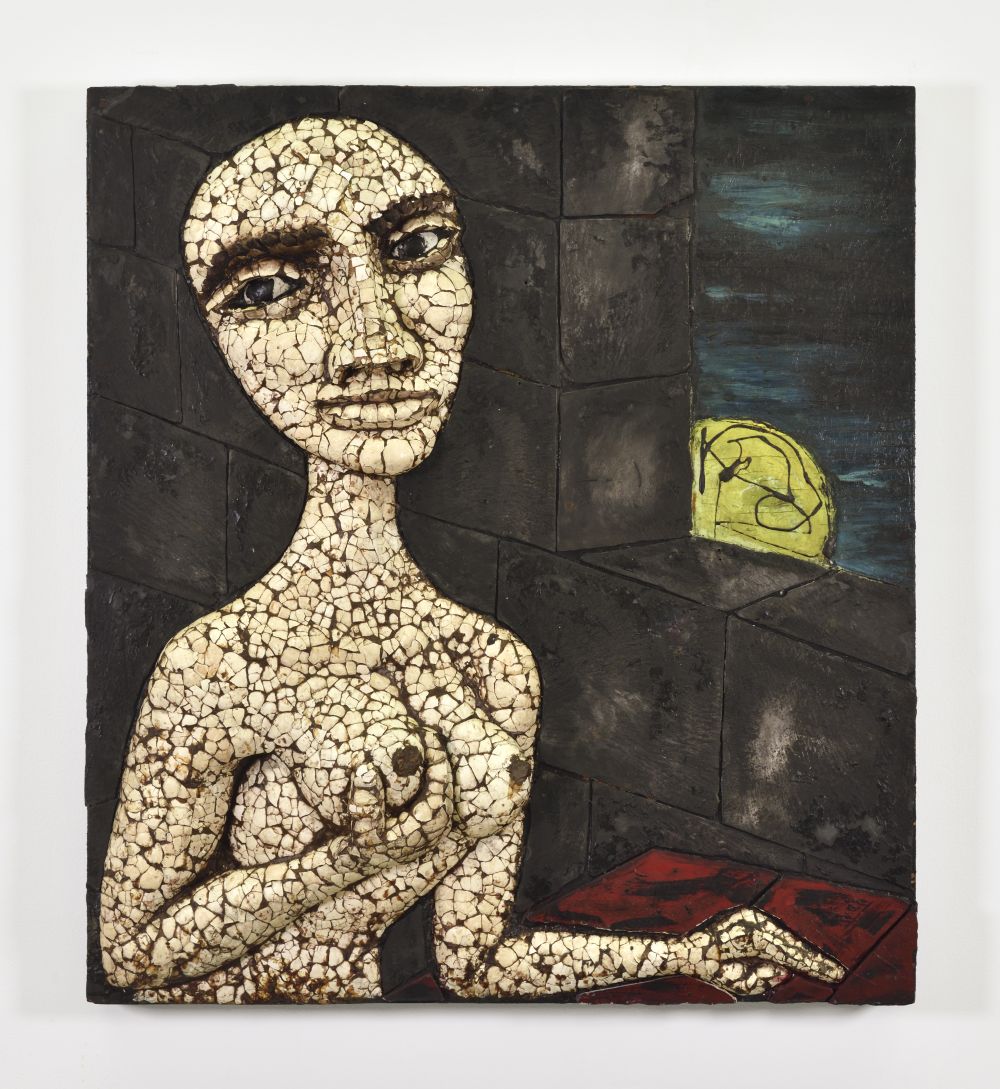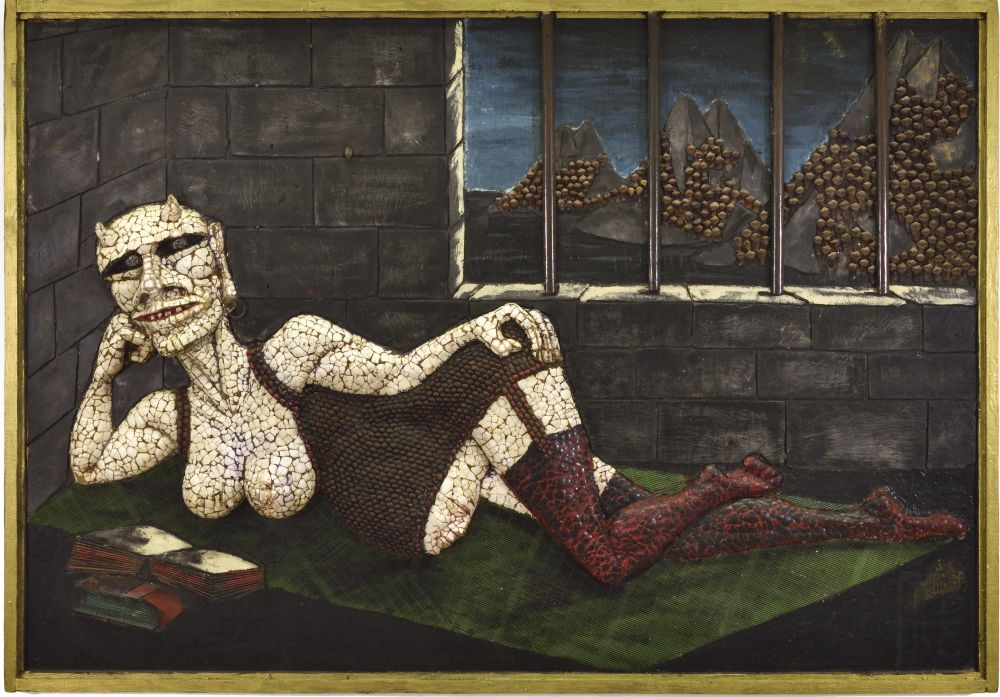Pierre Bettencourt

 214x135cm Signé, daté et titré au dos copie.jpg)

Selected Works

Pierre Bettencourt
L'aube, circa 1960
Technique mixte sur panneau
80 x 70 x 5 cm
Signée au dos
 214x135cm Signé, daté et titré au dos copie.jpg)
Pierre Bettencourt
La comtesse sanglante, 1967
Technique mixte sur panneau
213 x 135 cm
Signée, datée et inclinée au dos

Pierre Bettencourt
La prisonnière, 1958
Technique mixte sur panneau
43 1/4 x 61 3/4 x 11/8 pouces

Pierre Bettencourt
Ignace de Loyola, 1978
Technique mixte sur panneau
48 3/8 x 30 1/4 x 5 1/8 pouces
Incliné, signé et daté 1978 au dos
Some of the works depicted are no longer available.
Biography
It was during his travels in Africa, Oceania, the Far East and America that the artist found his inspiration to create his disturbing fantastic figures, mixing the divine, an unknown cult, and eroticism.
Bettencourt was influenced by a multitude of sources, including lost civilizations, mythology, as well as his travels to India, Oceania, Mexico, Egypt and Europe. Surrealism is also a major influence in his work. Some art critics have called his high reliefs post-surrealist and thanato-erotic because of their themes.
Today, his works are kept in several important museums, including the Grenoble museum, the Rennes museum, the Strasbourg museum, the Saint-Étienne Museum of Modern Art, the Abattoirs in Toulouse, the National Museum of Art Moderne in Paris and MAC's Grand Hornu in Belgium.
Public Collections
Musée de Peinture et de Sculpture, Grenoble, Hôtel d'Agar, Cavaillon, Centre d'art contemporain de l'abbaye d'Auberive, Musée des Beaux-Arts, Rennes, Musée d'Art Moderne et Contemporain, Strasbourg, Musée d'Art et d'Industrie, Saint-Etienne, Les Abattoirs, Toulouse, Musée National d'Art Moderne, Paris, MAC's Grand Hornu, Belgique
